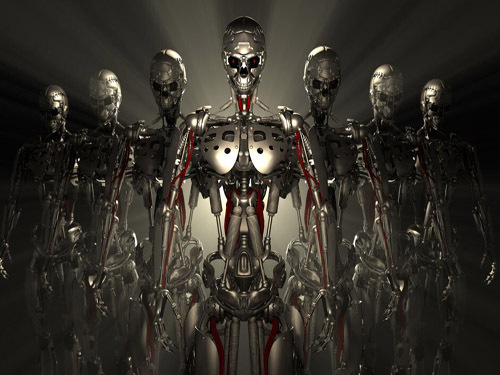
It has been 50 years since the birth of the world's first remote-controlled robot. With the development of computer and automatic control theory, the advancement of related technologies and the needs of industrial production, the development of robots has undergone three stages: programmable teaching and reproducing robots, robots based on sensor control, and intelligent robots.
At present, due to the rapid progress in artificial intelligence, computer science, sensor technology and other related disciplines, the research of robotics has entered a higher level. Recently, this reporter interviewed the deputy director of the Automation Department of Tsinghua University and Professor Zhang Tao of the doctoral tutor about the status quo and development prospects of China's intelligent robots.
Robot concept slowly expanding
At the two national conferences this year, when the government work report talked about the transformation of the industrial structure, it emphasized the need to implement “Made in China 2025†and accelerate the transition from manufacturing to a manufacturing power. The "Outline for the Development of China's Manufacturing Industry (2015-2025)" has therefore received much attention. In this project, known as the "China 4.0 Industrial Planning," robots occupy an important position. Zhang Tao said in an interview with reporters that with the popularization of robots in the industrial field, the level of automation and intelligence in China's industrial manufacturing will be greatly enhanced, and it will become the “finishing point†for improving China’s manufacturing competitiveness.
An intelligent robot is a machine system that fully simulates humans in the sense-thinking-effects. It can comprehensively examine the technologies of various areas of artificial intelligence and study the relationship between them. Zhang Tao said that intelligent robots should have three capabilities: the ability to sense the environment, the ability to perform certain tasks and influence the environment, and the ability to connect perception with behavior.
With the expansion of the application of intelligent robots, the tasks to be completed by intelligent robots become more and more complex, and the manual analysis and design of intelligent robots becomes more and more difficult. "As an intelligent robot, we must be able to fuse the information obtained by the sensor, can effectively adapt to changing environments, have strong adaptive capabilities, learning capabilities and autonomous functions." Zhang Tao said that the current level of intelligence in the development of intelligent robots and Not high, can only be said to be the initial stage of intelligent robots. The core issues are how to improve the autonomy of intelligent robots and have a more friendly man-machine interface. Second is to improve the ability of intelligent robots to adapt to changes in the environment.
"With the continuous development of research in the field of robots, the concept of robots is gradually expanding." Zhang Tao said, "At present, some people in China have some limitations on the understanding of robots, and even stay at the level of robotic arms and humanoid robots. In fact, industrial robots, mobile robots, bionic robots, medical robots, space robots, etc. are all covered by robots. In recent years, drones with very strong foreign development momentum should also be included in the category of robot concepts."
Based on domestic market, tap domestic demand
China has the world's largest robot demand market. When talking about the gap between China's intelligent robots and the developed countries such as the United States, Japan, and Germany, Zhang Tao believes that research in the United States, Japan, and some European countries has a different focus on robotics. The United States has always been a leader in the world of intelligent robot technology. Its technology is comprehensive, advanced, and adaptable. Its visual and tactile artificial intelligence technologies have been widely used in aerospace and automotive industries. In addition to developing industrial robots, the United States also serves military robots.
Due to a series of supportive policies in Japan, various types of robots, including smart robots, have developed rapidly. European countries are also at an advanced level in the research and application of intelligent robots. China started late compared with the above developed countries. Although China has carried out a series of related research and development work in recent years, and promoted by universities and some research institutes in the country’s 973 and 863 projects, it has made active attempts to develop smart robots and has entered a period of vigorous development of robots, but currently There is no robot that can actually realize industrialization.
Zhang Tao believes that in order to truly enhance China's own strength and narrow the gap with developed countries, "should be based on the domestic market, tap domestic demand, and develop robots with their own characteristics." At the same time, the R&D of robots is a complex system project. To do a series of work, it is necessary to focus on all the forces that can be concentrated. At present, the domestic R&D forces are still relatively decentralized. R&D work mainly depends on the advancement of national projects, and lacks truly powerful companies to integrate various forces. As far as the Department of Automation of Tsinghua University is concerned, it is mainly engaged in control research and does not have the ability to complete the research and development of the whole machine. Taking market demand as a guide and adopting a combination of "production, study, and research", it is possible to fundamentally promote the rapid progress of robot R&D.
In the interview, the experts hoped that through the media, they would call on the state to increase the support of intelligent robots and truly own their own core technologies instead of taking the old road of imitation of foreign products.
DUDU NEW ENERGY AUTOMOBILE COMPANY , https://www.duduelectriccar.com
![<?echo $_SERVER['SERVER_NAME'];?>](/template/twentyseventeen/skin/images/header.jpg)